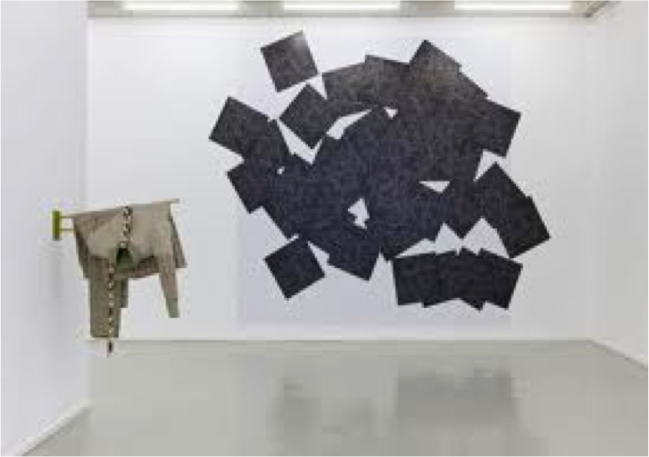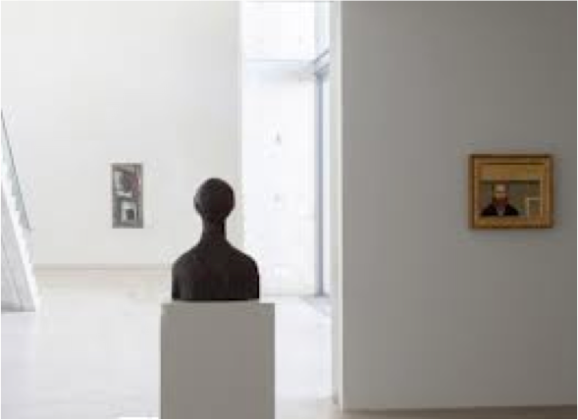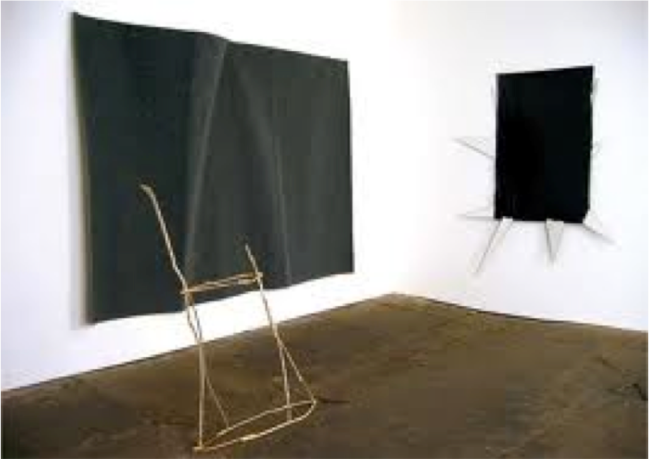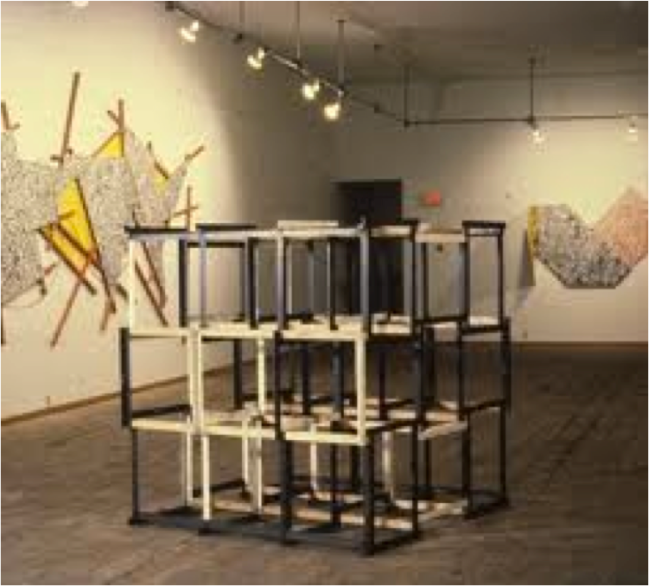A book produced by the New Museum in New York to mark an inaugural exhibition at its new home. The aim of exhibition and the book is to try and detect a global trend towards the ‘fragmentary and contingent’ in some of the stronger sculpture being made in the 1st decade of 21st-century.
“Making art in the 21st-century is just the same as making art in any other century, except for the money the coats everything like ash. It is accompanied by the creation of artist hierarchies where vanity and insecurity go hand-in-hand like the opposing strains of a Labradoodle.” So says Richard Flood in his introduction. Apart from his obvious comments on money and a deep sense of stratification in the art world, Flood believes that contemporary artists are clinging to nostalgia as if it were an antidote to some terrible disease. Other artists cling to technique, which has become “the varnished mausoleum for masterpieces.” He continues, “nowadays there are masterpieces everywhere, racing into the marketplace like sperm to the womb. Paintings are, of course, where the masterpieces are most frequently identified, they are also found in highly produced moving image works digitised photography, drawings and the lately rehabilitated art of collage and occasionally sculpture, particularly if there are high fabrication costs.”
Gedi Sibony
Flood is pretty damning of the art world especially the part responsible for the canonisation of so-called masterpieces. He believes in the current age that no time is wasted waiting for an art work to be awarded the connoisseurial status of masterpiece. He just believes that are crowned when some art-world guru pronounces a work so and that’s that. In his words “the appellation has replaced the reality.”
He believes the masterpiece syndrome is neither a reaction to the instability of our times but just the marketplace. He believes the time is right for the anti-masterpiece–things that are cobbled together, or pushed and prodded into a state of suspended animation–stubbly, brutish forms that “know something of the world in which they may are made.”
He believes that is anti-masterpiece can be identified in the work’s materials–those materials are ones redeemed from the rubbish heap and are Franciscan in their simplicity. Extravagant gestures have given way to a handshake or a hug (maybe even a shrug). Sculpture, he believes, is one of the final frontiers for the artist who truly wants to tempt fate. Outside of the white box, today’s most innovative, essential sculpture is testing the limits. One of its strongest characteristics is the inherent ability to camouflage itself from any formal hierarchy. Traditional sculptural materials that were long approved by the market are not the favoured materials of the contemporary sculptor. There isn’t enough time or distance to perpetuate monuments because we live in a world of half gestures but there’s no definitive stance because the sands shift incessantly over a desert of evidential truth. Sculpture is now that thing that jams its foot in the door and scurries around looking for a comfortable corner from where the new becomes inevitable. No absolutes are reliable and no hierarchies are consistent to that which seems most part of the world and its freshness, rawness and anxiety trumps the autopsies of acceptable in the negotiable. Sculpture is the medium that knows best how to live in the present and find the past.
The book features the work of a number of artists. Most notable for me and my interests are Isa Genzken – the German artist who lives and works in Berlin.. Genzken’s play with scale and montage produces assemblages which combine lost and unlikely combinations of objects which are coloured themselves and/or have colour drizzled over them.
Other artists whose work I found interesting were Aaron Curry- retro fifties feel to the pieces, and Tom Burr – interiors and flat plains like Jesse’s work and Carol Bove, which must have inspired Benedict’s work.
Gedi Sibony
For me personally, the work of Gedi Sibony’s is most inspiring. He uses construction materials, carpet, plywood, cardboard etc. there’s more than a hint of Jessica Stockholder here – an interest of mine since year 1.
Jessica Stockholder



